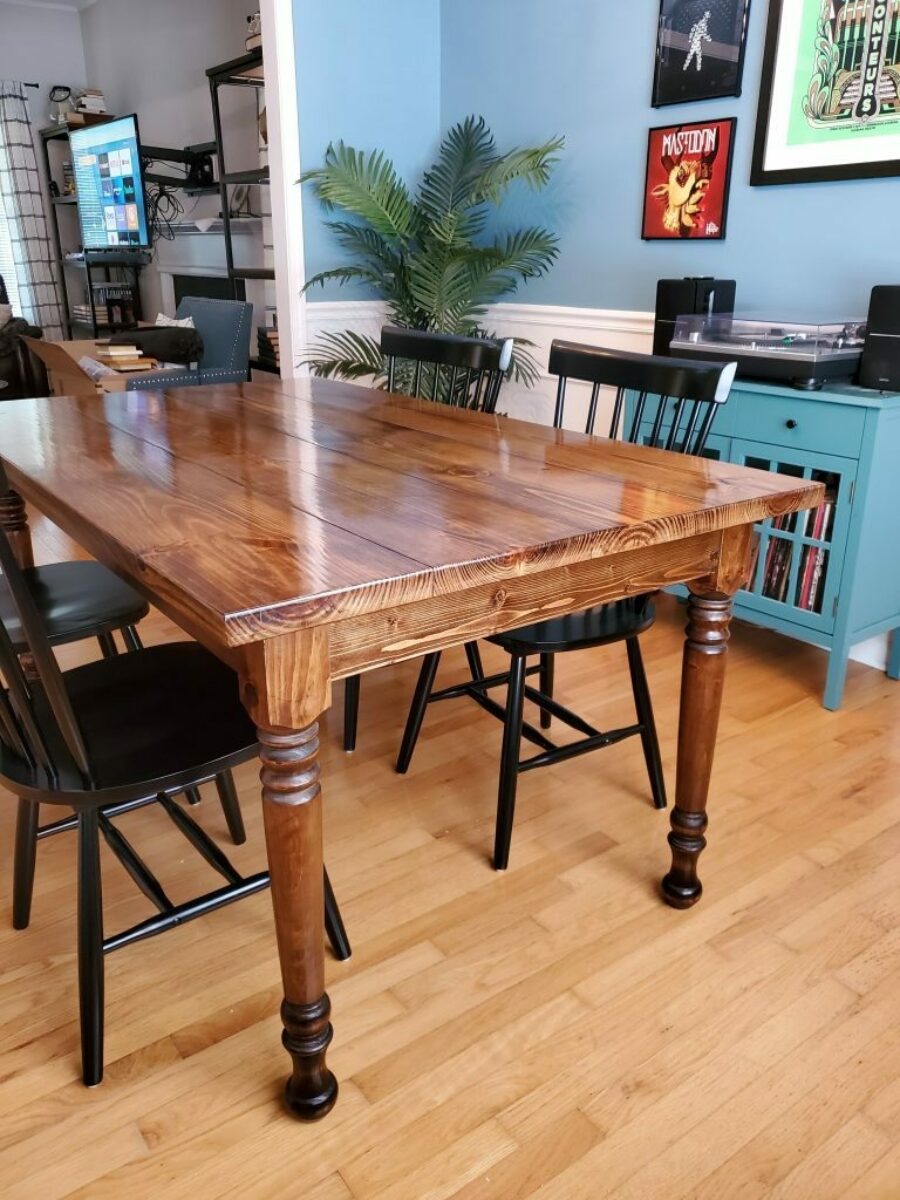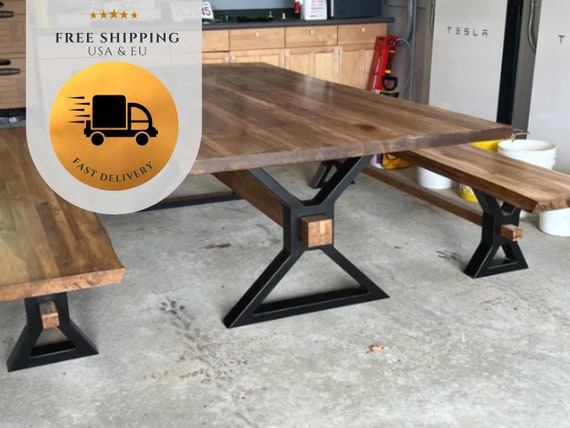Simple Steps to Replacing Old Dining Room Table Legs with New Ones
Simple Steps to Replacing Old Dining Room Table Legs with New Ones
Blog Article
Professional Tips for Setting Up Dining-room Table Legs for Optimum Stability
When it concerns installing eating space table legs, achieving optimum security is critical for both performance and visual appeals. The process starts with selecting the best materials and hardware, adhered to by meticulous positioning and consideration of weight distribution. Each action plays an essential duty in ensuring that the completed product stands up to day-to-day use without endangering security or design stability. Understanding the nuances of these components can considerably affect the overall result. What specific methods can boost stability even better?
Pick the Right Legs
When choosing the suitable legs for your dining-room table, it is important to take into consideration both functionality and looks. The legs you pick will considerably affect the total layout and stability of the table. First, assess the table's meant usage; if you anticipate constant celebrations, sturdier legs, such as those made from solid wood or metal, may be much more appropriate, as they provide boosted durability and support.
Next, think about the height and style of the legs in relation to the tabletop. Standard table commonly vary from 28 to 30 inches in elevation, so make sure the legs line up with this requirement for comfort. The design of the legs need to enhance the layout of the table top-- whether it be contemporary, rustic, or conventional. For circumstances, conical legs can add a contemporary touch, while transformed legs could communicate a much more classic aesthetic.

Select Appropriate Hardware
Just how can the right hardware boost the stability and durability of your eating room table? The choice of ideal equipment is critical to making certain that the legs of your table are safely affixed and able to endure normal usage. High-quality screws, bolts, and braces provide the required stamina to sustain the weight of the table, as well as any extra tons positioned upon it throughout gatherings or meals.
When selecting screws, select those made from sturdy products such as stainless steel or brass, which resist rust and preserve stability with time. The size of the screws is just as important; they ought to penetrate deeply into the table's structure without endangering integrity. For bolted connections, consider utilizing lock washers to stop loosening due to vibration or movement.
Furthermore, utilizing corner braces can include additional assistance, specifically for bigger tables or those with heavier tops. These braces disperse weight uniformly and help keep the table's shape. Ensuring that the hardware you select is appropriate for the certain products of your table will certainly additionally improve its overall security and durability, enabling you to enjoy your dining experience for several years to find.
Ensure Proper Placement
Proper placement of dining space table legs is crucial for both aesthetic allure and functional stability. To attain optimal positioning, start by gauging the distance from the table's corners to the leg add-on factors.
Utilize a level throughout installment to verify that each leg is perpendicular to the table top. This step is critical, as even small inconsistencies can rise into considerable security concerns with time. It is recommended to mark the wanted leg placements on the bottom of the table with a pencil or concealing tape before securing them. This method functions as an aesthetic overview, enabling adjustments as needed.
Moreover, verify the placement after the first screws are tightened, as changes may be necessary prior to totally safeguarding the equipment. By focusing on appropriate positioning, you not only enhance the table's overall design yet additionally make certain that it continues to be practical and stable for years ahead.

Think About Weight Distribution
After ensuring correct positioning of the eating space table legs, it is necessary to think about weight circulation to boost stability and functionality. dining room table legs. Correct weight distribution is critical in avoiding making certain and tottering that the table can support its intended tons without threat of tipping or breaking down
When positioning the legs, guarantee they are put at equal ranges from the facility of the table to equally disperse the weight throughout the structure. Consider the weight of the tabletop and any kind of items that will regularly hinge on it, such as attractive items or tabletop appliances. Tables with much heavier surface areas must preferably have legs located closer to the corners, as this maximizes the base of assistance and lessens the risk of instability.
Additionally, if the table is meant for use in a high-traffic location, consider making use of heavier materials for the legs or adding supporting elements, such as cross-bracing or a lower shelf - dining room table legs. These adjustments can aid preserve balance and protect against changing during use. Eventually, a well-considered weight distribution approach will considerably enhance the table's general check this efficiency, guaranteeing it continues to be a eye-catching and useful focal point for your eating room
Examination Security Prior To Usage
Testing the stability of the dining-room table before usage find more is a critical action that ought to not be ignored. Guaranteeing that the table is safe and secure and stable can protect against crashes and prolong the lifespan of the furnishings. Begin by using gentle pressure to various points on the table surface. Push down on the facility and after that along the sides, observing any wobbling or moving. If the table shows instability, determine the legs or joints that might require adjustment.
Following, examine that all screws and fasteners are tightened correctly. Loose links can result in instability and possible damage over time. If necessary, use timber adhesive on joints to boost security, making certain to enable sufficient drying out time.

Verdict
In final thought, the setup of dining-room table legs requires cautious consideration of materials, weight, placement, and equipment circulation to attain optimum security. By selecting top notch bolts and sturdy legs, ensuring exact alignment, and distributing weight uniformly, the structural stability of the table can be considerably boosted. Performing a stability examination prior to regular use further ensures that the table will stand up to day-to-day stress, therefore offering a secure and dependable eating experience.
When it comes to mounting dining space table legs, accomplishing optimum security is extremely important for both capability and appearances. The legs you select will considerably impact the overall style and stability of the table (dining room table legs). Typical dining tables generally range from 28 to 30 inches in height, so ensure the legs straighten additional hints with this standard for comfort.Proper positioning of eating space table legs is important for both visual appeal and practical stability.In verdict, the installment of dining area table legs requires mindful factor to consider of materials, positioning, hardware, and weight distribution to accomplish maximum security
Report this page